Running is an intense sport that works within the laws of gravity and physics. In biomechanics, runners experience ground reaction forces, which is the force exerted by the ground as the body places contact. The force that is applied to each footstep will receive a reaction (force) that passes through the foot, upward toward each lower extremity joint. Without proper self-maintenance care, runners may experience skeletal or muscular pain or injury.
Incorporating yoga poses post-run is ideal to maintain flexibility and recirculate lactate build up. In addition, most yoga asanas are not isolated stretches; therefore, the body’s connective tissue and what is known as fascial lines are opened in various poses. There are various fascial lines in the body, which connect foot to head and the right and left sides of the body. Yoga improves the flexibility along these specific lines to keep the musculature balanced and flexible.
Yoga poses can be used with traditional post-run flexibility exercises. Hold each pose for 30 to 60 seconds each and complete each asana twice.
Diamond Pose – Variation
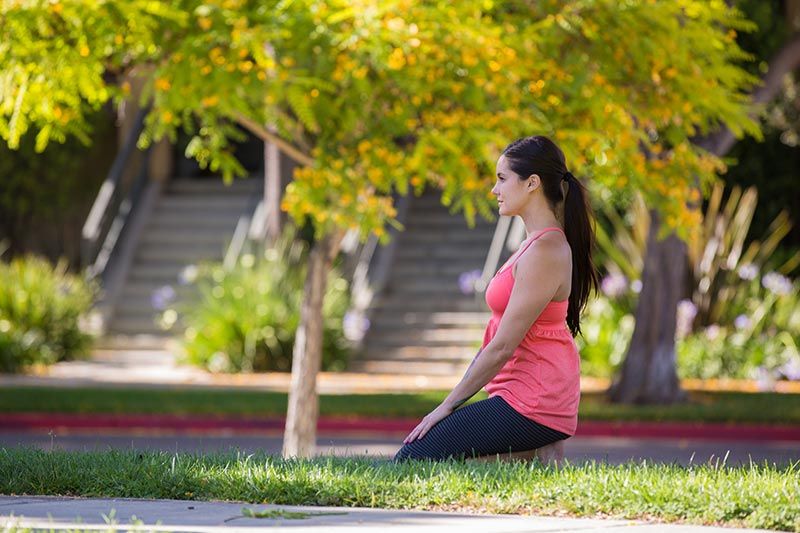
This pose opens the bottom of the foot (plantar fascia), which is the foundation for the kinetic chain; thus, it is important to keep the feet healthy and stretched.
How to Perform: Kneel onto your shins and curl the toes underneath. Slowly, sit the glutes on the back of the heel and allow the feet to open and lengthen as you maintain deep breathing. To make the stretch more challenging, interlock the hands and place them behind the head (elbows wide) to open the chest.
Standing Pigeon
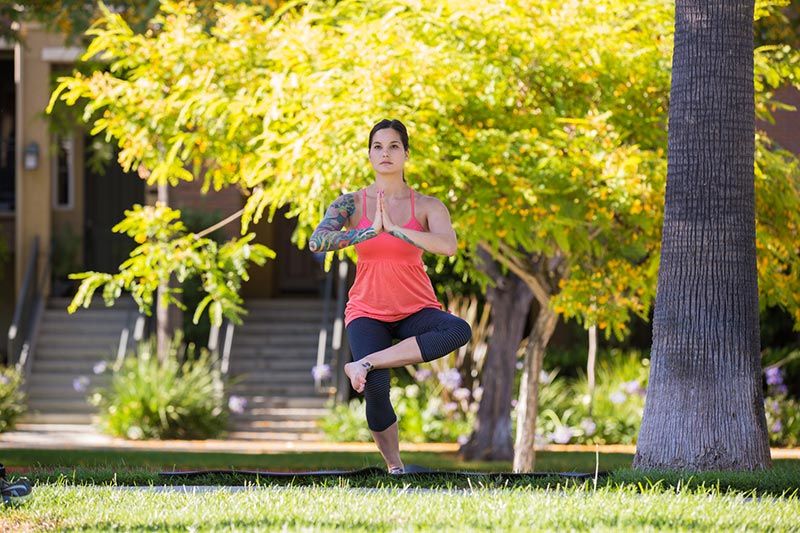
This pose opens the hip’s external rotators, which is ideal to maintain hip mobility.
How to Perform: Place the right ankle just above the left knee. Slowly sit the hips back, similar to lowering into a chair. Use a wall or tree to better maintain balance or place the hands on the shin. To practice balance, reach the arms forward in front of the chest. Switch and repeat on the opposite leg.
Standing Downward Dog
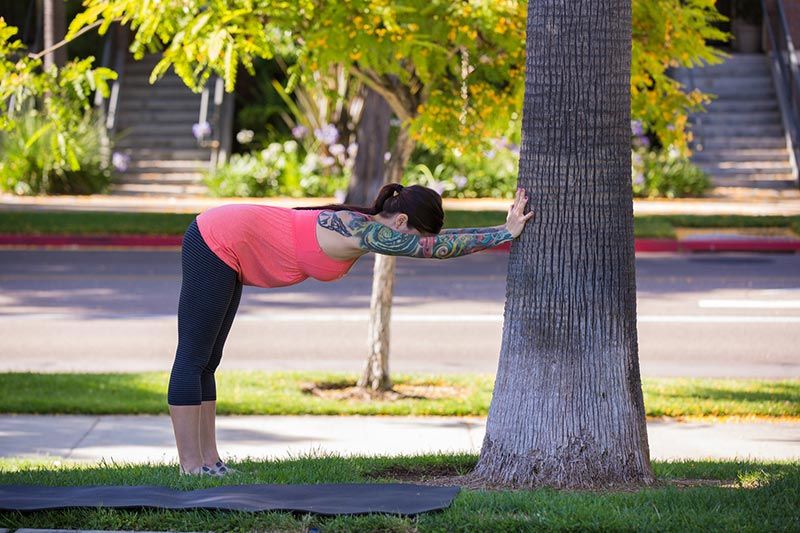
This pose opens the chest musculature while lengthening the posterior side of the lower extremities.
How to Perform: Find something stable to hold onto or on which to place your hands. Position the feet hip-distance apart and several inches in front of the hips. Shift the pelvis back to where the chest and arms come parallel to the ground. For a deeper calf stretch, lift the toes off the ground.
Pyramid Pose
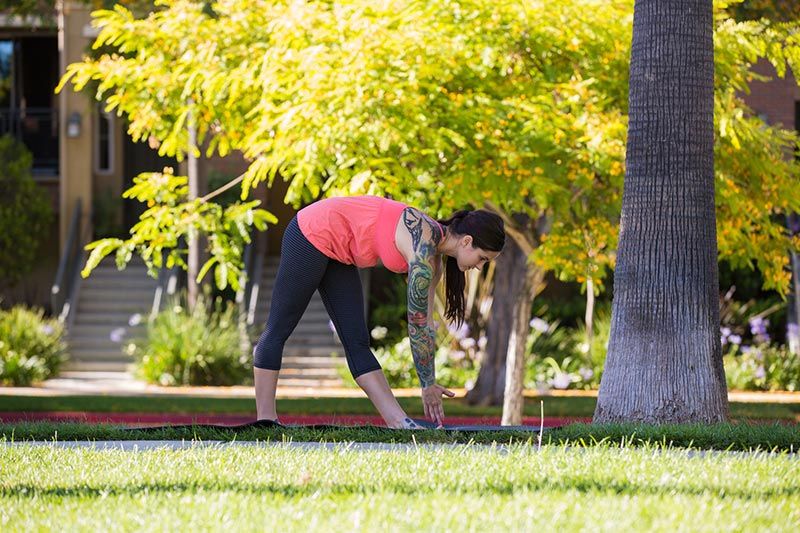
This pose lengthens the back side of the legs from the glutes toward the calves.
How to Perform: Place the right foot about 2 to 3 feet in front of the body with toes facing forward. Slowly, lower the torso to the point of flexibility and rest the hands on the shin, foot or floor. Allow the upper body to relax. Repeat on the opposite leg.
Low Lunge
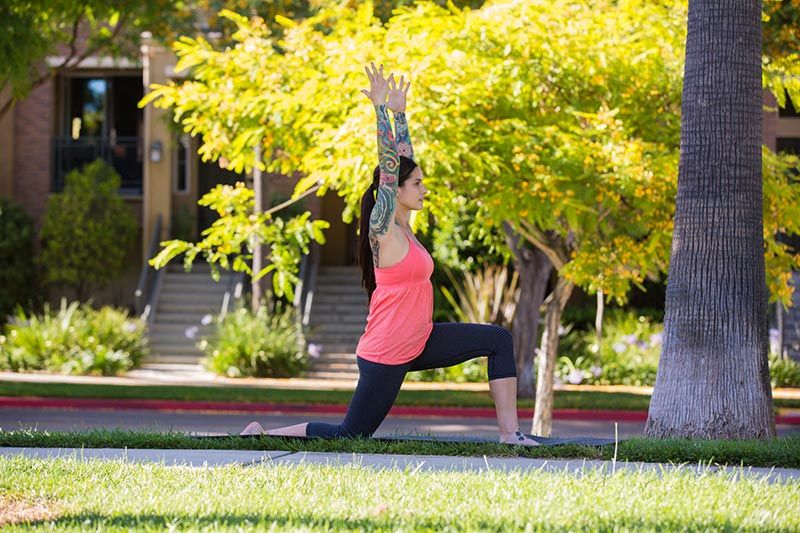
This pose lengthens the top of the quadriceps in addition to the hip flexor muscles, which is ideal as running incorporates repetitive hip-flexion movements.
How to Perform: Place the right knee on the ground (support the knee with a towel or mat underneath) and step the left foot forward. Hinge from the pelvis to where the torso moves slightly forward and the left front of the thigh feels a stretch. Reach the arms overhead and hold; repeat on the opposite leg.
Warrior 1 With Chest Opener

This pose is ideal to open the hip, oblique and chest musculature.
How to Perform: Find a wall or object on which to place your arm. Stand with the right side of the body facing the wall. Step the right leg back (foot may turn out to a 45-degree angle) and bend the elbow 90 degrees with the fingers facing upward. Place the forearm on the wall and lunge into the left leg toward a 90-degree angle. Tuck the pelvis forward and keep the left hand by the side. The stretch should be felt from the pelvis through the abdominals and into the chest region. Repeat on the opposite leg.




 by
by 
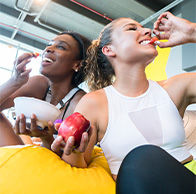



 by
by